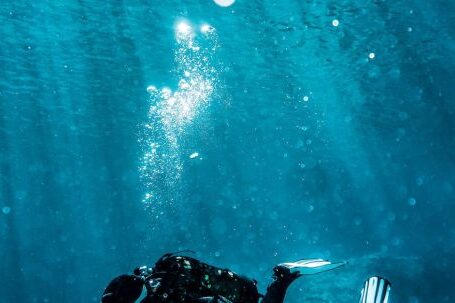Before embarking on a scuba diving adventure, it is crucial to conduct thorough pre-dive checks. These checks ensure that all equipment is functioning properly, reducing the risk of accidents and enhancing the overall diving experience. Neglecting pre-dive checks can have serious consequences, so it is essential to make them a routine part of every dive. In this article, we will explore the importance of proper pre-dive checks and the key areas to focus on.
Ensuring Equipment Functionality
The first and most critical aspect of pre-dive checks is to ensure that all diving equipment is in proper working condition. This includes checking the air tanks for any signs of damage or leakage. A simple visual inspection can help identify any potential issues that may arise underwater. Additionally, it is crucial to check the regulator for proper airflow and functionality.
Inspecting the Buoyancy Control Device (BCD)
The BCD plays a vital role in maintaining buoyancy and stability underwater. Before every dive, it is essential to inspect the BCD for any signs of wear and tear, such as leaks, loose straps, or malfunctioning valves. A thorough inspection ensures that the BCD will function properly throughout the dive, providing the necessary control and stability.
Verifying the Dive Mask and Snorkel
Having a clear and properly fitting dive mask is essential for a comfortable and enjoyable dive. Before entering the water, it is crucial to check the mask for any cracks, scratches, or loose straps. Additionally, testing the snorkel for proper airflow ensures ease of breathing during the dive. Neglecting these checks can result in discomfort and distraction underwater.
Examining the Dive Computer
Dive computers are invaluable tools for monitoring depth, time, and decompression limits. Before each dive, it is essential to check the dive computer for proper functioning and battery life. This ensures accurate readings and allows for effective dive planning. A malfunctioning dive computer can lead to confusion and potentially dangerous situations underwater.
Inspecting the Wetsuit or Drysuit
Diving in the appropriate exposure suit is crucial for maintaining body temperature and protecting against the elements. Before donning the wetsuit or drysuit, it is essential to check for any tears, holes, or loose seams. A well-maintained suit ensures comfort and warmth throughout the dive, allowing for longer and more enjoyable underwater experiences.
Checking the Weight System
Proper weighting is crucial for achieving neutral buoyancy underwater. Before each dive, it is essential to check the weight system for any loose or damaged components. Ensuring that the weight pockets are securely fastened and the release mechanisms are functioning correctly can prevent unexpected buoyancy issues and potential accidents.
The Consequences of Neglecting Pre-dive Checks
Neglecting pre-dive checks can result in serious consequences, including equipment malfunctions, discomfort, and even accidents. A simple visual inspection and functional test can prevent unnecessary risks and ensure a safe and enjoyable dive. Pre-dive checks should be considered an integral part of every diver’s routine, regardless of experience or frequency of diving.
In conclusion, proper pre-dive checks are of utmost importance in ensuring a safe and enjoyable diving experience. By focusing on equipment functionality, inspecting the BCD, verifying the dive mask and snorkel, examining the dive computer, inspecting the exposure suit, and checking the weight system, divers can minimize the risks associated with diving. Neglecting these checks can lead to equipment malfunctions, discomfort, and potential accidents. Therefore, it is imperative to prioritize pre-dive checks before every dive, allowing for a smoother, safer, and more enjoyable underwater adventure.





